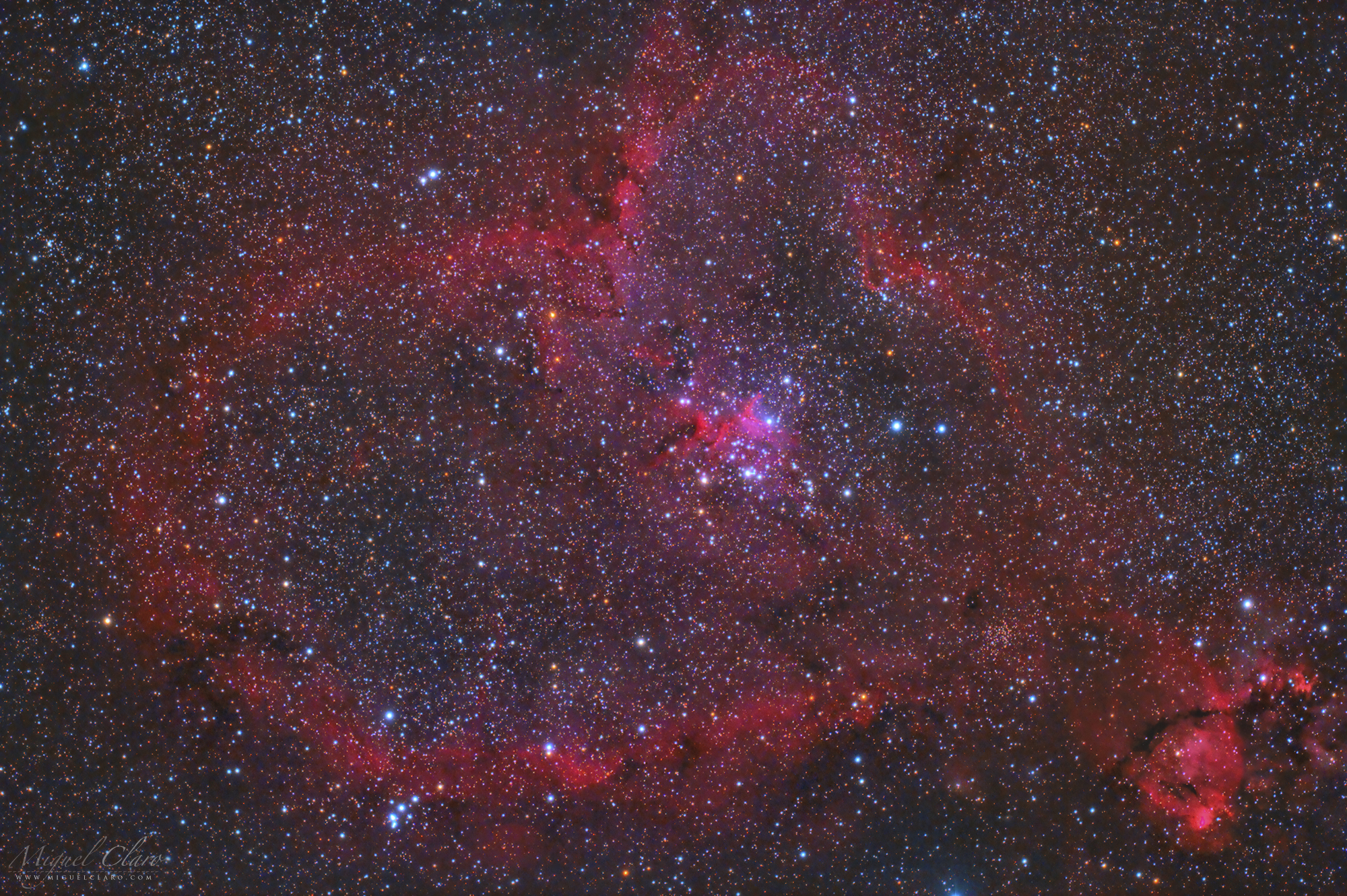Star-Speckled Heart Nebula Glows Red in Lovely Deep-Space Photo

Miguel Claro is a professional photographer, author and science communicator based in Lisbon, Portugal, who creates spectacular images of the night sky. As a European Southern Observatory Photo Ambassador and member of The World At Night and the official astrophotographer of the Dark Sky Alqueva Reserve, he specializes in astronomical "Skyscapes" that connect both Earth and night sky. Join Miguel here as he takes us through his photograph, "Heart Nebula: When the Universe Falls in Love."
The beautiful Heart Nebula, also known as IC 1805, is a bright, red emission nebula with a shape that resembles a human heart.
This cosmic cloud glows red because it's filled with ionized hydrogen gas. Darker lanes of interstellar dust create a dark silhouette in the center of the luminous, heart-shaped outline.
Located about 7,500 light-years from Earth, the Heart Nebula resides in the Perseus Arm of the Milky Way galaxy, in the constellation Cassiopeia. The brightest section, a fish-shaped knot at the cusp of the heart, was discovered before the rest of the Heart Nebula and is separately classified as NGC 896, or the Fishhead Nebula. [Gallery: Strange Nebula Shapes, What Do You See?]
The nebula's red glow and peculiar shape are a result of intense radiation emanating from a small cluster of stars near the nebula's core. Known as Melotte 15, this cluster contains a few young, hot and bright-blue supergiant stars nearly 50 times the mass of our sun. These stars are only about 1.5 million years old. (For comparison, our sun is about 4.6 billion years old). Many more dim stars that are only a fraction of our sun's mass also reside in this cluster.
Stellar wind, or the stream of charged particles that flows outward from the newborn stars, has sculpted the shape of the Heart Nebula by pushing its clouds of dust and gas outward from the core.
To capture this image of the Heart Nebula, I used a Takahashi FSQ-106ED refractor telescope with an EM-200 auto-guided mount and a Canon EOS 60Da DSLR astrophotography camera. The camera was programmed to shoot with an ISO setting of 1600 and an exposure time of 210 seconds. The final composite combines 12 frames with a combined exposure time of 42 minutes. Image processing was completed with PixInsight 1.8 and Adobe Photoshop CS6.
Get the Space.com Newsletter
Breaking space news, the latest updates on rocket launches, skywatching events and more!
The image was taken from the Cumeada Observatory at the Dark Sky Alqueva Reserve in Reguengos de Monsaraz, Portugal.
To see more of Claro's amazing astrophotography, visit his website: miguelclaro.com. Follow us @Spacedotcom, Facebook and Google+. Original article on Space.com.
Join our Space Forums to keep talking space on the latest missions, night sky and more! And if you have a news tip, correction or comment, let us know at: community@space.com.









